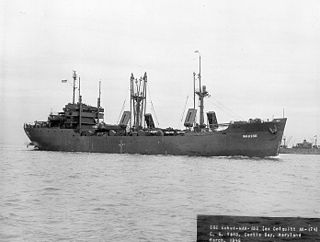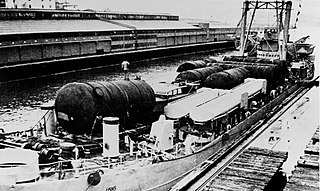 W
WBRP Benguet (LS-507) is a LST-542-class tank landing ship currently serving the Philippine Navy.
 W
WUSS Bering Strait (AVP-34) was a United States Navy Barnegat-class small seaplane tender in commission from 1944 to 1946. She tended seaplanes during World War II in the Pacific in combat areas and earned three battle stars by war's end.
 W
WUSS Bowers (DE-637/APD-40), a Buckley class destroyer escort of the United States Navy, was named in honor of Ensign Robert K. Bowers (1915-1941), who was killed in action aboard the battleship USS California during the Japanese attack on Pearl Harbor on 7 December 1941.
 W
WUSS Camp (DE-251) was an Edsall-class destroyer escort built for the U.S. Navy during World War II. She served in the Atlantic Ocean the Pacific Ocean and provided destroyer escort protection against submarine and air attack for Navy vessels and convoys.
 W
WUSS Castle Rock (AVP-35) was a United States Navy Barnegat-class small seaplane tender in commission from 1944 to 1946 which saw service in the late months of World War II. After the war, she was in commission in the United States Coast Guard as the Coast Guard cutter USCGC Castle Rock (WAVP-383), later WHEC-383, from 1948 to 1971, seeing service in the Vietnam War during her Coast Guard career. Transferred to South Vietnam in 1971, she served in the Republic of Vietnam Navy as the frigate RVNS Trần Bình Trọng (HQ-05) and fought in the Battle of the Paracel Islands in 1974. When South Vietnam collapsed at the end of the Vietnam War in 1975, Trần Bình Trọng fled to the Philippines, where she served in the Philippine Navy from 1979 to 1985 as the frigate RPS Francisco Dagohoy (PF-10).
 W
WUSS Chincoteague (AVP-24) was a United States Navy seaplane tender in commission from 1943 to 1946 that saw service in the Pacific during World War II. After the war, she was in commission in the United States Coast Guard as the cutter USCGC Chincoteague (WAVP-375), later WHEC-375, from 1949 to 1972. She was transferred to South Vietnam in 1972 and was commissioned into service with the Republic of Vietnam Navy as the frigate RVNS Lý Thường Kiệt (HQ-16), seeing combat in the Battle of the Paracel Islands in 1974. When South Vietnam collapsed at the conclusion of the Vietnam War in 1975, she fled to the Philippines, where she was commissioned into the Philippine Navy, serving as the frigate RPS Andrés Bonifacio (PF-7) from 1976 to 1985.
 W
WUSS Cook Inlet (AVP-36) was a United States Navy Barnegat-class small seaplane tender in commission from 1944 to 1946. She tended seaplanes during World War II in the Pacific and earned one battle star for her service. After the war, she was transferred to the United States Coast Guard, and was in commission as the Coast Guard cutter USCGC Cook Inlet (WAVP-384), later WHEC-384, from 1949 to 1971. She saw service in the Vietnam War during her Coast Guard career, receiving two campaign stars for her operations during the conflict. Transferred to South Vietnam in 1971, she operated as the Republic of Vietnam Navy frigate RVNS Trần Quốc Toản (HQ-06) until South Vietnam's collapse in April 1975 at the end of the Vietnam War. She fled to the Philippines and in 1976 was transferred to the Philippine Navy, which never commissioned her, instead using her as a source of spare parts for her sister ships, the Andrés Bonifacio-class frigates, before discarding her in 1982.
 W
WUSS Cyclone (PC-1) was the first of the Navy's Cyclone-class coastal patrol ships. As the lead ship of her class, Cyclone served as the test bed for this series of 14 vessels.
 W
WHMS Emphatic was a Favourite-class tugboat of the Royal Navy during World War II. Emphatic was built in the United States and transferred to the Royal Navy under Lend-Lease. She participated in the Normandy landings and was returned to the United States Navy postwar. She was transferred to the Philippine Navy in 1948 and received the name Ifugao. She was deleted in 1979.
 W
WUSS Garrett County (LST-786) was an LST-542-class tank landing ship built for the United States Navy during World War II. Named after Garrett County, Maryland, she was the only U.S. Naval vessel to bear the name.
 W
WUSS LST-821, renamed USS Harnett County (LST-821/AGP-281), was an LST-542-class tank landing ship built for the United States Navy during World War II. She was named for Harnett County, North Carolina and was the only U.S. Naval vessel to bear the name. She served the United States Navy in World War II and the Vietnam War. She was transferred to South Vietnam's Republic of Vietnam Navy, which named her RVNS My Tho (HQ-800).
 W
WUSNS Harris County (T-LST-822) was an LST-542-class tank landing ship built for the United States Navy during World War II. Named for counties in Georgia and Texas, she was the only U.S. Naval vessel to bear the name.
 W
WUSS Hickman County (LST-825) was an LST-542-class tank landing ship built for the United States Navy during World War II. Named after counties in Kentucky and Tennessee, she was the only U.S. Naval vessel to bear the name.
 W
WUSS Jerome County (LST-848) was an LST-542-class tank landing ship built for the United States Navy during World War II. Named after Jerome County, Idaho, she was the only U.S. Naval vessel to bear the name.
 W
WUSS Krishna (ARL-38) was one of 39 Achelous-class landing craft repair ships built for the United States Navy during World War II. Named for Krishna, she was the only U.S. Naval vessel to bear the name, and only one of three ships to be named after a Hindu deity.
 W
WUSCGC Kukui (WAK-186) was a Maritime Commission Type C1-M small cargo ship launched 21 January 1945, by Froemming Brothers, Milwaukee, Wisconsin, transferred to the Navy and commissioned and designated as USS Colquitt (AK-174) 22 September 1945. Two days later the ship was transferred to the Coast Guard for operation before being permanently transferred on 11 March 1946. Renamed Kukui and designated WAK-186 the ship was the largest in the Coast Guard with notable service installing, servicing and supplying the Loran-A and Loran-C electronic navigation chain stations in the Pacific until March 1972. The ship was transferred to the Philippines to serve as the Philippine Navy's supply ship BRP Mactan (TK90) until June 2001.
 W
WUSS LST-1072 was an LST-542-class tank landing ship in the United States Navy. Like many of her class, she was not named and is properly referred to by her hull designation.
 W
WUSS Madera County (LST-905) was a LST-542-class tank landing ship built for the United States Navy during World War II. Named after Madera County, California, she was the only U.S. Naval vessel to bear the name.
 W
WUSS Murrelet (AM-372) was an Auk-class minesweeper acquired by the United States Navy to remove mines from minefields laid to prevent ships from passing. She was the only U.S. Navy ship named for the murrelet, a small sea bird found chiefly on islands in the northern Pacific Ocean.
 W
WUSS Orleans Parish (LST-1069) was an LST-542-class tank landing ship in the United States Navy during World War II. Unlike many of her class, which received only numbers and were disposed of after World War II, she survived long enough to be named. On 1 July 1955, all LSTs still in commission were named for US counties or parishes; LST-1069 was given the name Orleans Parish, after Orleans Parish, Louisiana. She was the only U.S. Naval vessel to bear that name.
 W
WRPS Rajah Soliman (D-66) was a destroyer escort/frigate that served with the Philippine Navy between 1960 and 1964. A Buckley-class destroyer escort, it was originally named USS Bowers during its previous service with the United States Navy. It was the first destroyer escort to be operated by the Philippine Navy, and is the only member of its class ever operated by the service. Rajah Soliman was also the flagship of the Philippine Navy during its time in commission, which ended with the sinking of the vessel in 1964.
 W
WUSS Satyr (ARL-23) was one of 39 Achelous-class landing craft repair ships built for the United States Navy during World War II. Named for the Satyr, she was the only US Naval vessel to bear the name.
 W
WUSS Vigilance (AM-324) was an Auk-class minesweeper acquired by the United States Navy for the dangerous task of removing mines from minefields laid in the water to prevent ships from passing.
 W
WUSS Wachapreague (AGP-8) was a motor torpedo boat tender in commission in the United States Navy from 1944 to 1946, seeing service in the latter part of World War II. After her Navy decommissioning, she was in commission in the United States Coast Guard from 1946 to 1972 as the cutter USCGC McCulloch (WAVP-386), later WHEC-386, the fourth ship of the U.S. Coast Guard or its predecessor, the United States Revenue Cutter Service, to bear the name. In 1972 she was transferred to South Vietnam and served in the Republic of Vietnam Navy as the frigate RVNS Ngô Quyền (HQ-17). Upon the collapse of South Vietnam at the end of the Vietnam War in 1975, she fled to the Philippines, and she served in the Philippine Navy from 1977 to 1985 as the frigate RPS Gregorio del Pilar (PF-8) and from 1987 to 1990 as BRP Gregorio del Pilar (PF-12).
 W
WUSS Yakutat (AVP-32) was a United States Navy Barnegat-class small seaplane tender in commission from 1944 to 1946. Yakutat tended seaplanes in combat areas in the Pacific during the latter stages of World War II. After the war, she was in commission in the United States Coast Guard from 1948 to 1971 as the Coast Guard cutter USCGC Yakutat (WAVP-380), later WHEC-380, seeing service in the Vietnam War during her Coast Guard career. Transferred to South Vietnam in 1971, she was commissioned into the Republic of Vietnam Navy as the frigate RVNS Trần Nhật Duật (HQ-03). When South Vietnam collapsed in 1975 at the end of the Vietnam War, she fled to the Philippines, where the Philippine Navy took custody of her and cannibalized her for spare parts until discarding her in 1982.